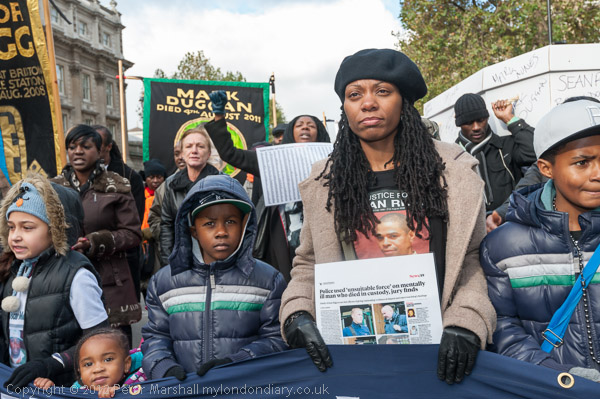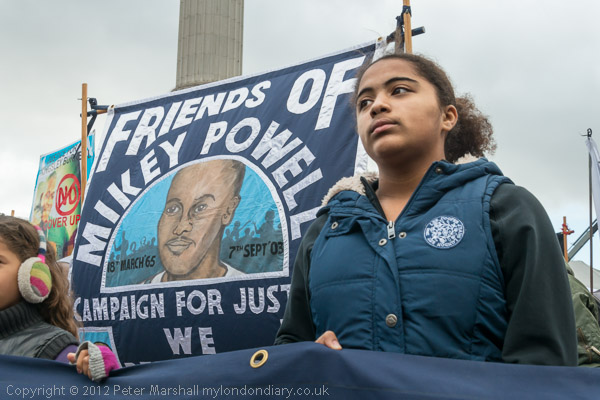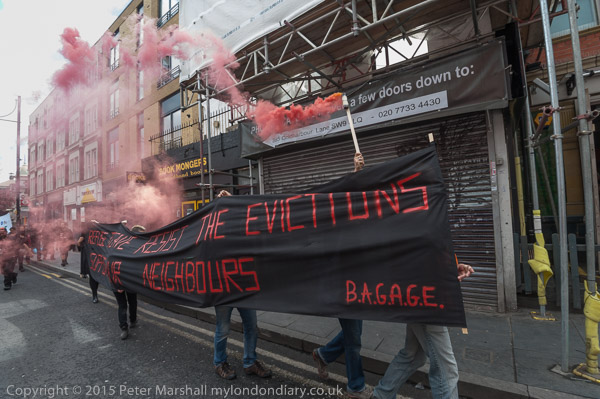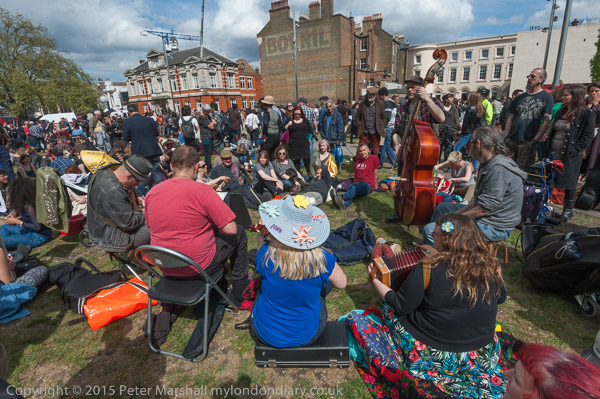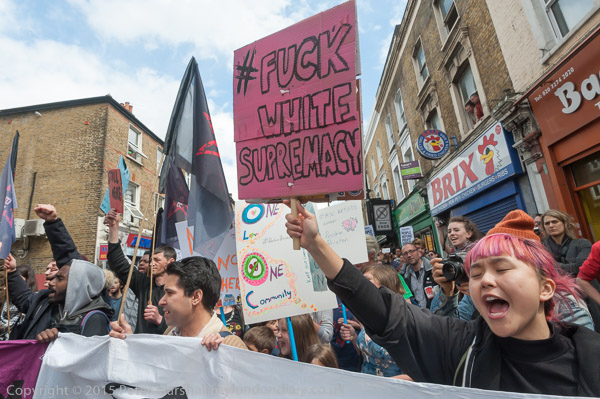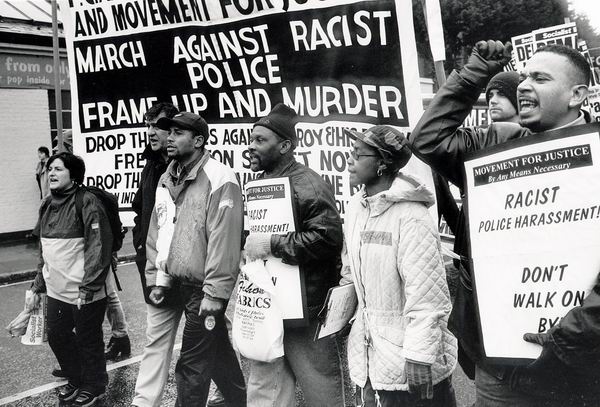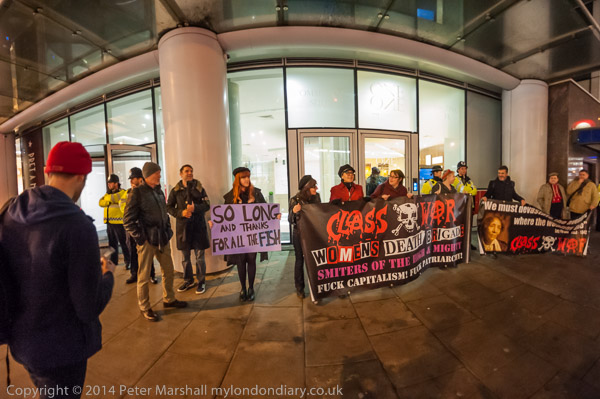Fossil Fuels, Bradley Manning & Global Racism – my Saturday 27th July 2013 began with a “radicalized midsummer cloud forest dream” against the support given to fossil fuels and climate chaos by the banks and the City of London, continued with a vigil for Bradley Manning who exposed US war crimes and ended with a march and rally against and Injustice.
Rev Billy at HSBC – Victoria

I met the Rev Billy and his choir on the Stop Shopping Church Tour England in a green open space on Victoria Street, opposite New Scotland Yard (which has since moved to the Embankment.) There they practised their performance as species – monkeys, jaguars and eagles – among those threatened by climate change.

Some had heads of Golden Toads, a Costa Rican species already made extinct by climate change. These were hidden away as the group walked towards the HSBC bank at Victoria, and we all walked in trying our best to look like normal customers and going up to the long line of ‘Express Banking’ cash machines.

Then the group erupted into dance action, with the Rev Billy using a megaphone to tell bank staff and customers what is happening and why we are in HSBC. Fossil Fuels are killing life on this planet and London banks and the London Stock Exchange play a key role in this – a quarter of all fossil fuel shares are traded on the LSE and in 2010-12 the top five UK banks raised £170 billion for fossil fuel companies, with the HSBC in the lead. He promised that they would leave the bank after the short performance.
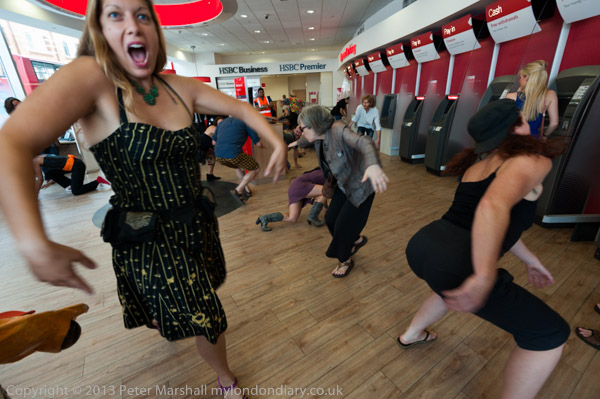
Then the Golden Toads arrived to save the species, bringing with them some large eggs of ice to help cool the planet down, and then as promised people left the bank to continue to the end of the performance on the wide pavement outside. Police arrived and went into the bank as the players were leaving to celebrate their action in a nearby cafe and bar.
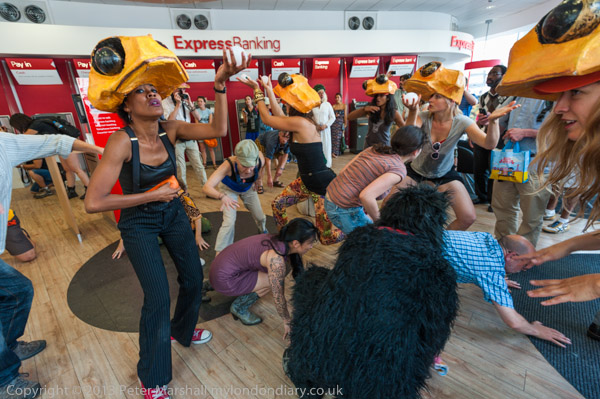
More at Rev Billy at HSBC
Free Bradley Manning Vigil – St Martin’s, Trafalgar Square

Saturday 27th July 2013 was an international day of action by the Bradley Manning Support Network, and in London they held a vigil on the steps of St Martin-in-the-Fields.

Bradley Manning’s trial had started on 3rd June in Fort Meade, US, and protests have continued both inside and outside the court, with the ‘gay whistleblower’ being celebrated in countries across the world and awarded the Sean MacBride Peace Prize. Many see Bradley – later Chelsea Manning as a hero who should be honoured rather than imprisoned. Her trial ended on 30th July with a sentence of 35 years, but in 2017 this was commuted by President Obama to seven years, dating from her arrest in 2010.
Against Global Racism and Injustice – US Embassy to Whitehall

Black Activists Rising Against Cuts (BARAC) UK held a rally outside the US Embassy in Grosvenor Square before marching to Whitehall in solidarity with families of Trayvon Martin, Stephen Lawrence, Azelle Rodney, Jimmy Mubenga and many others to highlight the reality of racism and seek justice, both in the UK and US.

The protest was supported by many anti-racist organisations including Operation Black Vote, the National Black Students Campaign, Global Afrikan Congress, PCS, RMT Black Members, Counterfire, UAF, Love Music Hate Racism, Lambeth TUC and Lambeth People’s Assembly and a number of well-known faces from the British left were among the marchers, some were scheduled to speak at the Downing Street rally.

The US Embassy was chosen as the starting point because of the killing in Florida of Trayvon Martin and the global outcry against the acquittal of his murderer under the Florida ‘Stand Your Ground’ law.
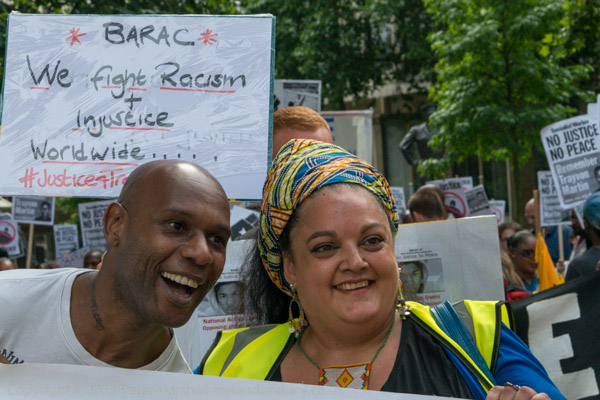
But although this was a protest against global racism and injustice, and it had a particular focus on this country, and as Lee Jasper stated “We march for Jimmy Mubenga, Mark Duggan, Kingsley Burrell, Smiley Culture and Azelle Rodney.” And others also made clear in speeches they were appalled by UK cases, including We march for Jimmy Mubenga, Mark Duggan, Kingsley Burrell, Smiley Culture and Azelle Rodney and many, many other cases.

I followed the march as it went through Mayfair, but then had to leave rather than attend the final rally.
More at Against Global Racism and Injustice.
